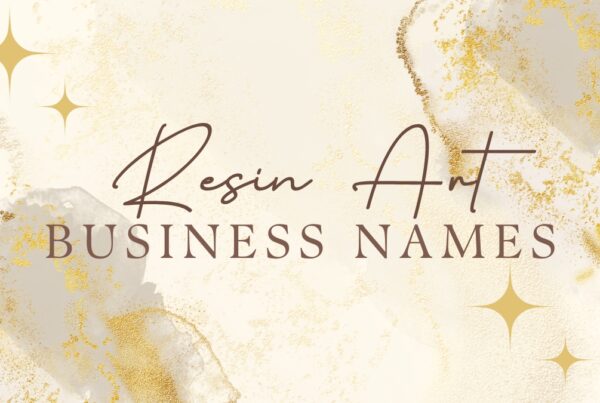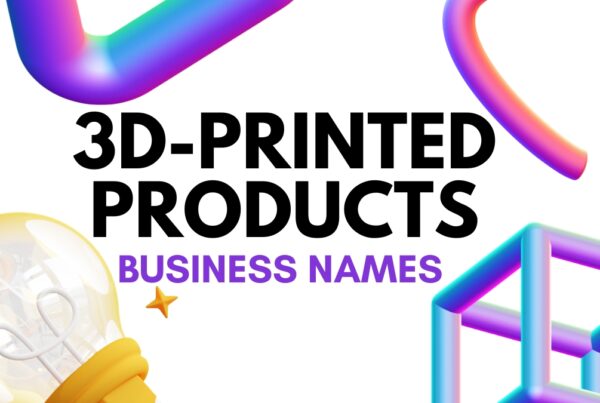Introduction
Brand names go beyond being simple words. They affect the understanding of how people see a company. They also help people in making purchasing decisions. Some brand names were created by luck. Others were selected with care. There are a few that almost had names capable of changing history. This article will explore some amusing and unexpected stories behind well-known brand names. We will see how these names became an important part of our everyday lives.
Google: The Billion-Dollar Typo
What If It Was “Googol” Instead?
Larry Page and Sergey Brin planned to call their search engine “Googol”. This is a mathematical term for a number that has 100 zeros. It demonstrated the extent of the information they wanted to organize. They even called it “Backrub” because it analyzed the “backlinks” of websites. However, when checking for a website name, a friend accidentally typed “Google” instead. They liked its appearance and retained it.
At first, Google was just a research initiative at Stanford University. Then, the search engine gained so much popularity that the name became permanent. Nowadays, “Google” represents more than just the name of a company. It is now a verb! When someone wants to find information online, they say, “Just Google it.” If the error had been corrected, would “Googol” be as well-known today?
Pepsi: From Medicine to a Global Drink
A Pharmacist’s Formula for Digestion
Pepsi has not always been a soft drink. In the 1890s, a pharmacist from North Carolina named Caleb Bradham created a beverage to help digestion. Er nannte es „Brad’s Drink“. He thought the name needed appeal then later changed it to “Pepsi-Cola”. It came from the words pepsin, which is a digestive enzyme. Although the beverage is missing pepsin, the name remained unchanged. Currently, Pepsi ranks among the largest soft drink brands globally.
Pepsi has undergone many changes throughout the years. It has brought forth numerous new flavors and even competed with Coca-Cola during the notorious “Cola Wars.” Regardless of how much Pepsi develops, its name and background serve as a reminder that it began as a basic digestive aid!
Pepsi went through two bankruptcies during the Great Depression before it grew into the giant it is today. As part of an unusual marketing ploy in the 1980s, Pepsi negotiated a deal with the Soviet Union to exchange their soft drink for submarines and warships, which temporarily made Pepsi the owner of the sixth-largest navy in the world before the fleet was sold for junk.
Lego: A Lucky Latin Coincidence
Playing Well with Words
Lego is originated from the Danish phrase “Leg Godt”, which translates to “play well”. Years later, the founders discovered that “Lego” translates to “I put together” in Latin. This was an unplanned but perfect fit for the toy brand!
In the 1930s, Lego began as a manufacturer of wooden toys. With the passing of time, it gained praise for its plastic construction blocks. Today, Lego represents more than merely toys. It features amusement parks, films, and gaming. With its simple yet significant name, it developed into a worldwide brand adored by both children and adults.
Prior to producing plastic bricks, Lego operated as a wooden toy manufacturer. However, in 1942, a fire razed their entire factory. After the owner, Ole Kirk Christiansen, rebuilt the company and transitioned to plastic, Lego became the world-renowned toy company we recognize today.
Adobe: Inspired by a Creek
A Simple Name from Nature
While a lot of tech companies choose names that sound futuristic, Adobe’s name came from Adobe Creek, a southward-flowing stream in Sonoma County, California, United States. There was a small stream found behind the house of co-founder John Warnock in California. It is astonishing to consider that a small water body inspired one of the leading software companies globally.
Adobe is well recognized for applications such as Photoshop and Acrobat. These tools help millions of individuals with design, photography, and documentation. Although the name may have originated from nature, today Adobe stands for creativity and digital innovation on a global scale.
Amazon: The Name That Almost Was “Cadabra”
From Magic to Massive
Jeff Bezos originally wanted to name his online bookstore “Cadabra”, similar to “Abracadabra” as it appeared to him like magic. However, his lawyer misunderstood it as “Cadaver”, which refers to a dead body. Bezos made a quick modification to it. Before landing on Amazon, Jeff Bezos had other names in mind, like “Relentless” and “MakeItSo.” The website Relentless.com still redirects to Amazon today because he loved the name so much!
He chose Amazon because:
It caused people to think of something immense, such as the Amazon River and because it began with the letter “A,” it would appear first in online searches.
Amazon is now among the largest companies globally. It offers a wide range of products, including books, electronics, and groceries. Just picture us shopping on “Cadabra” instead!
Samsung: From Grocery Store to Tech Giant
The Meaning Behind “Three Stars”
Samsung’s initial products were not phones or TVs. Founded in 1938, it operated as a grocery trading company. In the Korean language, Samsung translates to “Three Stars.” It represented something significant, strong, and eternal. Samsung evolved into a technology empire over time, but it began as a small grocery venture.
Today, Samsung produces some of the most popular smartphones, TVs, and home appliances worldwide. Its transformation from groceries to gadgets illustrates the remarkable power of a simple name.
Twitter: The Name That Almost Became “Friendstalker”
A Close Call with a Bad Name
During the development of Twitter, one suggested name was “Friendstalker.” Yes, Fortunately, the team recognized that it sounded much too creepy. As an option, they chose »Twitter«. This name draws inspiration from birds that produce brief, rapid sounds. It suited the platform perfectly, as it initially permitted only brief updates.
Twitter emerged as a potent instrument for news, trends, and social movements. Just think about how different things could have been if it had been named “Friendstalker” instead!
Nokia: A Paper Company That Became a Phone Giant
A Name Inspired by a River
Nokia was originally a paper company before it ventured into mobile phones. It later produced rubber and cables before venturing into electronics. Nokia originated its name from the Nokianvirta River located in Finland. The company transitioned from producing paper to becoming one of the pioneering mobile phone manufacturers globally!
Nokia was the world’s largest phone brand at its height. The Nokia brand, despite facing fierce competition, is still recalled for producing robust and dependable phones.
Virgin: A Joke That Became a Brand
From Music to Airlines
As Richard Branson launched his first venture, a record shop, he and his friends made light-hearted jokes about being “business virgins.” This indicates that they were inexperienced in business. The name Virgin became established. With the company’s growth into airlines, mobile networks, and space travel, its name became associated with one of the world’s most recognized brands. For a name that originated from a joke, it’s not too shabby!
Virgin currently possesses over 400 companies. The name continues to evoke the daring, adventurous spirit of its founder.
Spotify: A Misheard Word That Made History
A Happy Mistake
Spotify’s founders were thinking of names when one of them misheard a random word. Later, they said it stood for “Spot” and “Identify.” No matter what the real story is, the name became huge in the world of music streaming.
Daniel Ek and Martin Lorentzon, the co-founders of Spotify, were unaware that another company had already created the name SoundCloud. They hurried to secure the Spotify domain and trademark ahead of their competitors.
Spotify changed the way people listen to music. It made streaming easy and affordable. The name may have been a mistake, but today, millions of people know it and use it daily.
Brands That Changed Their Names: Surprising Transformations
A strong brand name can determine a company’s success. However, not every well-known brand began with the names we recognize today. Some changed names for greater appeal, others rebranded to attract a worldwide audience, and a few made changes just to clarify. Below are several of the most fascinating changes to brand names throughout history and the reasons behind them.
Nike: From “Blue Ribbon Sports” to a Global Icon
Before it became the world’s leading sportswear company, Nike was known as Blue Ribbon Sports (BRS). BRS, which was established in 1964, began as a distributor of Japanese running shoes. However, as the company expanded, they sought a name that presented greater strength and inspiration.
eBay: From “AuctionWeb” to a Marketplace Giant
In 1995, Pierre Omidyar created an online auction platform named AuctionWeb. As the platform developed quickly, Omidyar recognized the importance of a more stable identity for it.
Initially, he aimed for Echo Bay Technology Group, drawing inspiration from a gold mining company, but the domain EchoBay.com was already in use. He simplified the name to eBay, which grew into one of the largest online marketplaces globally.
Subway: From “Pete’s Super Submarines” to a Global Franchise
Subway was established in 1965 under the unwieldy name Pete’s Super Submarines. The name represented the collaboration between founder Fred DeLuca and Dr. Peter Buck, from whom he borrowed money to launch the business.
With the brand’s expansion, they recognized that the original name was overly lengthy and caused challenges for marketing. They adopted the name Subway in 1968, which was shorter, more memorable, and easier to identify.
Sony: From “Tokyo Tsushin Kogyo” to a Household Name
Sony was established in 1946 under the name Tokyo Tsushin Kogyo (TTK), which means “Tokyo Telecommunications Engineering Corporation.” Though the name was logical in Japan, it wasn’t suitable for a company with worldwide ambitions.
In 1958, the company selected the name Sony, which was inspired by the Latin word “sonus” (sound) and the English term “sonny” (a term for young boys). The new name was short, had an international appeal, and was easy to pronounce across various languages. Sony developed into a leader in the fields of electronics, gaming, and entertainment.
Yahoo!: From a Complicated Acronym to a Catchy Name
Yahoo! was initially named “Jerry’s Guide to the World Wide Web,” after its co-founder, Jerry Yang. With the growth of the website, they moved to Yahoo!, an acronym for “Yet Another Hierarchical Officious Oracle.”
The initial phrase was not intended to be understood literally. The word “Yahoo” appealed to the founders because it had a fun, energetic, and slightly rebellious sound. The exclamation mark was included for added flair.
Instagram: From “Burbn” to a Social Media Phenomenon
Instagram was nearly named Burbn, reflecting founder Kevin Systrom’s passion for whiskey. Nonetheless, the app was overly complex, with features such as location check-ins and gaming.
The team decided for simplicity and chose to concentrate exclusively on sharing photos. They gave it the name Instagram, which combines “instant” with “telegram.” The change contributed to Instagram’s rapid rise in popularity, culminating in its acquisition by Facebook for $1 billion in 2012.
Conclusion
Some brand names were created by chance and it can make or break a brand. Others were selected with care. For some, the name they almost received was quite distinct! Be it an error in math, a joke, or a fortunate translation, these names contributed to the creation of billion-dollar enterprises.Whether it was a lucky mistake (Google), a necessary simplification (Nike), or a strategic decision (Sony), these rebrands prove that sometimes, the right name can change everything. These companies recognized the power of a strong, simple, and memorable name, and their changes helped them grow into global icons.
But what is it that gives a name it’s true power? Besides its significance, the phonetic qualities of a name can shape perceptions, excite feelings, and affect success. The sound of a name is essential to branding, from the rhythm and impact of its syllables to the psychological effects of certain letters. Explore The Sound of Names to uncover the impact of phonetics, psychology and linguistic patterns on some of the globe’s most well-known brands.




